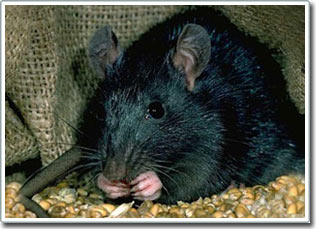The mouse - the 'dear' companion of humans
Through the haploid genome analysis of many hamster models in the world, it is possible to find signs of these four rodent growth periods respectively according to the major changes in the calendar. human history.
Rattus Rattus is the scientific name of the famous hamster through the allegorical poems of Jean de la Fontaine. Not so cute as one might think, it is the rat that has " embarked on" some of the tragedies in human history such as plague, lice fever, angiopathic disease . Moreover, this hateful rodent has disturbed our species for a long time since ancient times. Through the mitochondrial test of DNA from 170 mouse models in 32 countries, geneticists have identified six modern Rattus mouse lines derived from an ancient mouse species.

Hamsters - the " companion " of humankind 20,000 years ago (Photo: Nouvelobs.com)
n in 20,000 years ago in India and quickly developed into the Middle East and then to Europe.
This first invasion corresponded to the prosperity of ancient civilizations, followed by the Bronze Age, according to historians, it was the beginning of the ' commercial ' exchanges. Later the mouse also 'annexed' the rest of Africa, America and Australia, respectively, according to the discoveries of new human lands. Another influx of mice in East Asia has also migrated from Taiwan to Japan, from the Philippines to the region of Micronesia 3500 years ago, which corresponds to the period of human settlements in Asia.
Other mouse lines, preferring to " settle down ", stayed in their "homeland " (Himalayan, Thailand, Mekong Delta and Indonesia). This genetic decoding explains why mouse-borne infections may be more common in some areas than the rest of the world. From this we conclude that each rat species may possess a part of their own parasites and microbes. The hypothesis also needs to wait for further studies to conclude, but if it is accurate it can serve to predict and control many future diseases.
- Discover a mysterious companion star
- Mice also know how to cough like people
- Detecting a companion system of three stars
- The user's emotional intelligence system through the use of mouse
- Mouse Master: Adjust mouse speed
- Handy computer mouse for both hands
- Computer mouse flying?
- The mouse encounters a poisonous scorpion in a war that takes a while
- Logitech introduced the optimal mouse model for ultra-thin laptops
- 'Birthday' 30 years of the first computer mouse
- The new 'occupation' of the computer mouse
- Make a mouse skeleton using a 3D printer
 Animal 'suffering' after hibernation
Animal 'suffering' after hibernation Why do goats climb well?
Why do goats climb well? Scientists were surprised to see chimpanzees eating turtles
Scientists were surprised to see chimpanzees eating turtles Giant catfish died deadly due to drought in Thailand
Giant catfish died deadly due to drought in Thailand